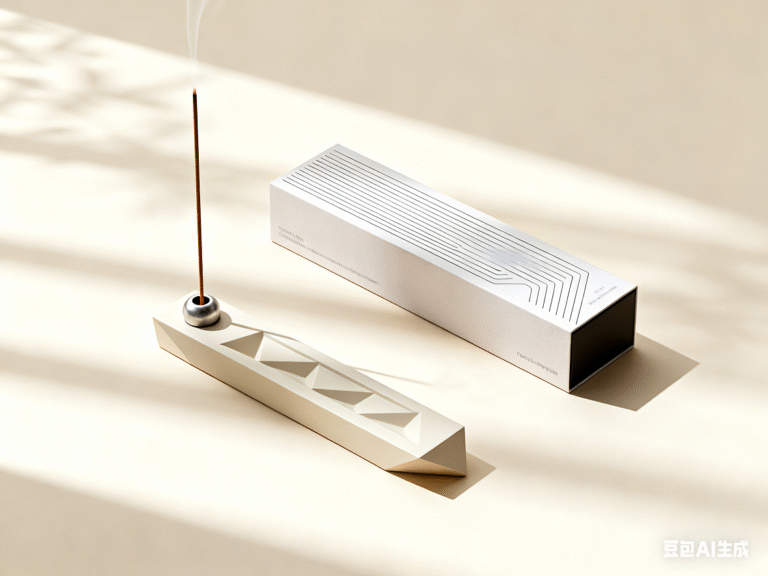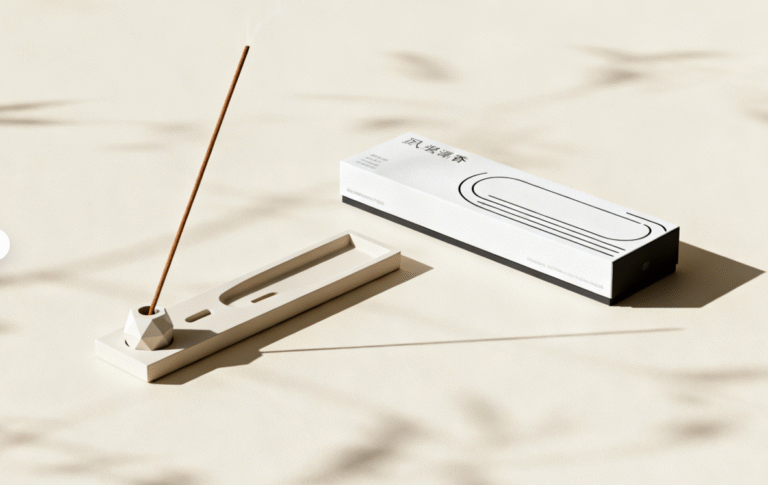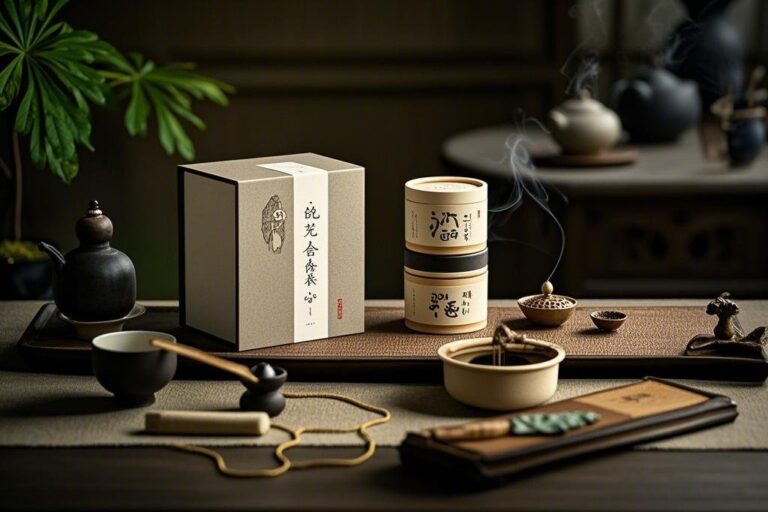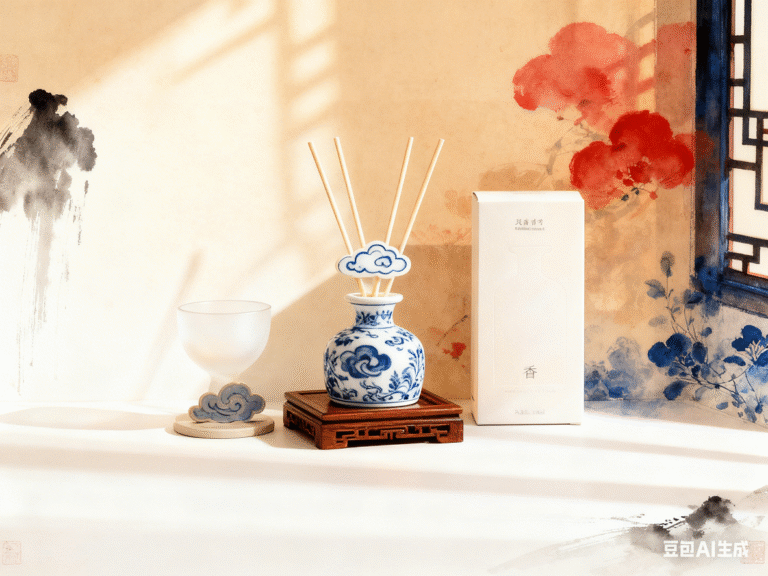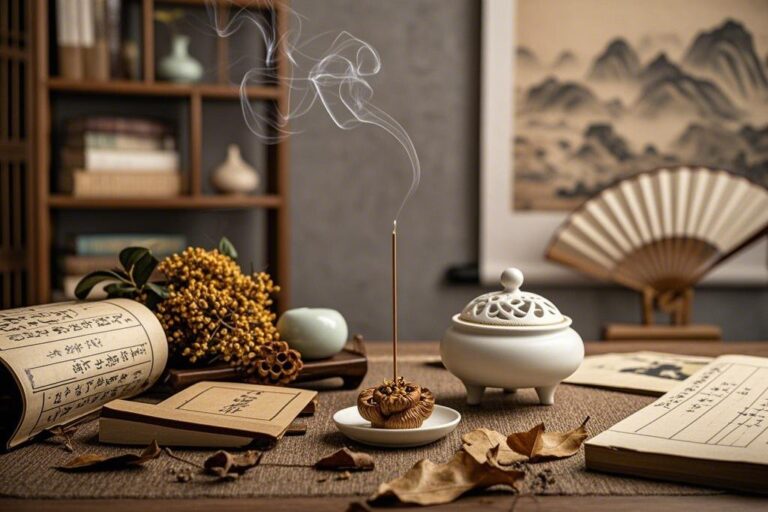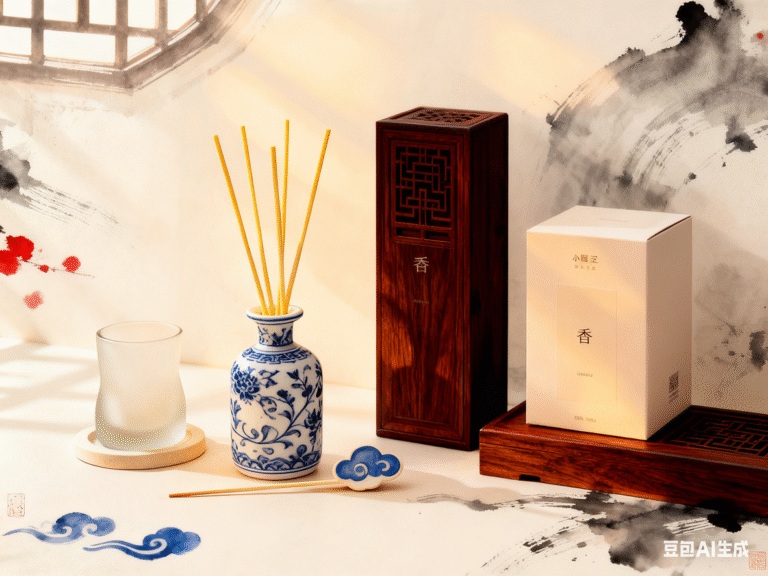Why Traditional Incense Stands Out?
1、What are the requirements for selecting and harvesting aromatic herbs?
The quality of the herbs directly determines the quality of the incense, so traditional incense science emphasizes the need to use authentic herbs. This is because herbs grown in different regions and environments have different medicinal properties and qualities. For example, Chuanjiao and Chuanxiong are medicines produced in the Chuan region of China.
The efficacy of aromatic herbs from the same place of origin varies greatly when they are picked at different times. This different time, that is, the ancients referred to the road. For example, Artemisia absinthium, March 3 picking, wrapping wontons and soup serving, with the effect of removing cold and dampness in the body; May Dragon Boat Festival picking, there is the birth of yang qi, help the positive and eliminate the effects of evil. Therefore, people have been in the picking and selection of medicinal herbs attach great importance to its origin and the timing of the picking, that is, the Taoist herbs referred to.
2、What is the principle of combining traditional incense?
Traditional incense is about: getting from the heart, the law of heaven, applying rites, harmonizing with medicines, becoming a law, and performing in writing.
The basic principle of the traditional and incense is: incense, not only to aroma nose, but also to nourish the health, through the opening, wisdom and wisdom, the aroma to the warm and long for the importance of the aroma can not take away the nature. That is to say, the aroma can not induce the nature of the overflow, God does not take away. That kind of long-term use of incense not only can not achieve the effect of life, but also make the nature of the dissipation. Therefore, the aroma can not take away the nature of the traditional incense production process is a core principle. It is because of adhering to this concept, so that the traditional incense not only become a fragrant thing, but also become a good medicine for the enlightenment of health.
Therefore, the traditional incense first of all should have a strict, with the heaven and earth seasonal transportation, assimilation of the formula, the king, the subject, the adjuvant, the auxiliary each in its place; secondly, the natural Taoist medicines and materials, after the law and strict concoctions; and then the time and the incense, the cellar and become. Each link is not to be ignored.
3、What are the similarities and differences between Haphyllum and TCM in terms of drug compounding?
In terms of compounding regulations, Chinese medicine talks about “king, minister, supporting, making”, and Xiangjia talks about “king, minister, supporting, assisting”. Seems like a word difference, in fact there is an essential difference. Medicine, such as the commander-in-chief of the army, in order to get rid of disease, need to use medicine to arrange the army. Medicine more from the mouth, by making the medicine lead the way, according to the form of disease, the patient’s physical condition, or disease or slow, both to get rid of disease, but also need to prevent the drug harm to the body. Therefore, Chinese medicine has its own unique rules.
Incense is different, incense will not correspond to specific foci of disease, in order to cure the disease as the direct purpose, but to support the right to dispel evil, through the channels and apertures, nourish the life, peace and body and mind as the main appeal. The form of incense into the human body is from the outside and inside, through the mouth, nose, body hair orifices and other different levels of the respiratory system into the body, the formation of odor on the different levels of the human body’s overall maintenance. It is not necessary to guide, but the aroma is free to communicate with the human body, free to traverse. Therefore, the fragrance of the “king, minister, supporting, assisting” has its own special meaning and a unique method of matching system.
4、What are the requirements of traditional and incense for aromatic herbs?
An important determinant of the quality of traditional incense is the aromatic herbs. The place of origin and time of picking of incense herbs have strict requirements in the tradition, that is, the Taoist herbs spoken by the ancients. Dao refers to the practice, picking time should be in line with the birth, growth, transformation, harvest, hide the laws of heaven and earth and the law of herbs. Such as incense, the best time to pick is winter, this time, all the breath hidden in the incense. Ground refers to the region, origin. Different regions of the plant’s medicinal properties and aroma is different, such as Hainan incense in Indonesia incense from the breath to the use is different. Therefore, the real and incense family on the origin of incense and picking time, the requirements are very strict.
In the process of and incense, almost all of the incense must undergo strict concoctions, the process of concoctions is a process of removing falsehoods, removing the crude and extracting the essence of the process, but also the process of making the reverse to guide the process of smooth. Almost all of the fragrant herbs need to go through and in the incense method of concocting before they can enter the incense.
5、What are the requirements for traditional incense in the use of adhesives?
The binder of traditional incense should not only have good adhesive effect, but also the binder should have the basic conditions of harmony with the incense medicine, or even be an incense medicine itself. Among them, the binder that can be attributed to Yangming meridian and harmonized with the spleen is the best choice.
This is the reason why for thousands of years and incense mostly use elm bark as a binder, elm inner bark has a good viscosity, breath calm, warm and light, at the same time has the effect of spleen and aromatic characteristics. Secondly, white and is also a traditional incense commonly used in the binder.
6、 traditional and incense have special requirements for water?
Water is one of the important factors that cannot be ignored in the process of making incense, and it is an important medium for incense and medicine. Therefore, the ancient and incense is very concerned about the texture of the water, pure, flowing river water is the first choice, and to pure Dongliushui is good. In the traditional sense, the east flowing water has the opportunity to help incense Yang qi born. Therefore, in ancient times, many of the big some of the incense workshop built in the water quality of the river. Such as Jinan, Shandong Province, the old incense workshop in the Xiaoqing River, Laizhou incense workshop built on the banks of the Wang River, including Tibet, many of the old incense workshop is also the same.
There are many incense to use “spiritual water” point of view. The so-called spiritual water, refers to some special regions, time, the scene of the water, such as Mount Wutai, Mount Tai, Mount Putuo, Mount Laoshan and other famous mountains and special water springs, March 3 snow, rain, rain and other rain at a certain time with the team rain, snow water. History and Su Dongpo pick plum heart snow water and combined plum blossom balm “spring letter in the snow” records.
7、What are the common aromatic herbs used in traditional and incense?
There are about four hundred kinds of aromatic herbs that can be used for traditional incense. Generally used more than one hundred kinds, the vast majority of plant roots, stems, leaves, fruits and fruits machine plant condensation of the fragrant resin class. There are also individual animal spices and plant synthetic spices.
Commonly used woody aromatic herbs include incense, yellow ripe incense, white wood incense, white sandalwood, purple sandalwood, descending incense, cypress incense, clove branches, cinnamon sticks, and cinnamon bark;
Herbal rhizomes include Angelica dahurica, ginseng, galangal, Melaleuca alternifolia, Rhizoma Ligustici Chuanxiong, tulip, orchid root, and horse chestnut;
The fruit group includes cardamom, Clove, and Thuja sutchuenensis;
Herbal stems and leaves include zero-lingzhi, ligustrum, patchouli, rue, licorice, glycyrrhiza, licorice, thatch, confederate, calamus, Sichuan pepper, fennel, and so on;
Fragrance concretions include maple, myrrh, frankincense, benzoin, borneol, and camphor;
Animal-based materials include Muskiness, Ambergris, and Turbo Operculum;
The phytosynthesis category includes Storax;
The minerals are andrographis and cinnabar.
The actual natural world is full of aromatic plants, according to incomplete statistics of more than three thousand species, many of which can also be and incense, such as Chai Hu, Yi Zhi Ren, rosemary, lavender and many other species.
8、Why was agarwood called the “Xiangzhongge Lao” in ancient times?
The role of agarwood in traditional incense is to set the fragrance and blend it with other fragrances, which can harmonize the medicinal properties of all herbs. Therefore, agarwood is an indispensable raw material in traditional Chinese medicine. Due to the unique function of agarwood, such as being a highly respected courtier in the imperial court, ancient people called it the ‘Xiangzhongge Lao’.
9、What are the taboos in traditional and fragrant processes?
There are many taboos and requirements for traditional incense during the incense making process, such as cleanliness of the environment, bathing and changing clothes for the incense maker, avoiding meat and fishy odors, prohibiting unauthorized personnel from entering, prohibiting incense making during women’s menstrual periods, and prohibiting animals such as chickens, ducks, cats, and dogs from approaching during incense making. Many incense products also need to be prepared at the right time and on the right day.
10、What is the biggest difference between traditional incense making and modern incense making?
Traditional incense is based on the care of the human body and mind, both physical and mental aspects of all the fundamental, and also has the effect of physical and mental pleasure. From the human health effects and efficacy considerations, the only way to use this kind of life incense is to use natural incense, according to the purpose of the demand for incense according to the king, subject, supporting, supporting the strict composition, and synthesize the incense in order to play the greatest role. At the same time, traditional incense also has the role of physical and mental pleasure, in which the cultural connotation is also an important part. The “qi” and “rhyme” of incense are its vitality. Traditional incense generally has the effect of supporting the right to get rid of evils, open the orifices, nourish the blood, nourish the life, open the wisdom of life, the rhyme is vivid, and the harmony of man and heaven and other efficacies. Therefore, the traditional incense production hair rigorous, many incense products also need to choose the time and incense, incense medicine or products through the cellar so that its medicinal properties interact with each other, so that the incense is no longer try a simple pile of drugs, but the birth of a melting of culture, the energy of heaven and earth, the organization of the formula, and the incense and the taste of the heart of the person in one of the cultural products. This is the ancient sages diligently seeking the real incense.
The modern incense production, most of the form of simple imitation, the actual appearance, and no substance, not to mention the efficacy. Only the use of chemical aromatics to imitate a variety of scented industrialized products, is similar to plastic flowers, wax fruit and other crafts of goods.
Because of the essential difference between modern incense and traditional incense, modern incense can only be viewed and used as handicrafts. However, most of the modern incense using chemical flavors, chemical binders and chemical dyes and other substances that are not beneficial or harmful to the human body, long-term use is likely to cause air pollution and harm to people, generally should not be used indoors frequently. Especially the aroma is very strong incense, most of the chemical benzene exceeds the standard, propargyl contains formaldehyde and xylene, often used on the human body caused serious harm is incalculable.
11、How to make traditional incense?
The key to the production of traditional incense is to have a good incense formula, good incense medicine, strict preparation. Because the ancient form of incense is mostly Incense Balls, incense powder, incense paste, the production of no mechanical equipment, handmade can be. For example, Dong Xiaowan’s handmade pills are made with the above conditions, or with water and materials, or with honey and materials, and the pills are formed into the required size by hand. To make balm, the ingredients are refined into a paste in a sand vessel. If you need to make powder, you just need to make powder from the ingredients. If you need to make thread incense, disk incense, you need to borrow modern machinery to press out the strips. In order to achieve the desired effect, after the incense is made, it is best to cellar for a period of time, the aroma will be more warm.
The main raw materials for making traditional incense: aromatic herbs, fillers and binders. Incense, also known as spices, are mostly aromatic plants.
The best filling material is cedar powder, followed by white pine, poplar, etc; Traditional adhesives are often used for elm bark and white bark.
12、What is the pattern of traditional incense compounding?
The traditional incense is similar to the important combination, but the two are very different: the function of traditional Chinese medicine is to cure diseases, while incense is to cure the “undiseased disease”; traditional Chinese medicine is based on different diseases, in order to eliminate the disease foci, the regulation of the body’s yin and yang secret for the purpose of incense is to cultivate and supplement the morality and nourish the temperament, to achieve the life of the same, health care, health care for the purpose of the cure of the undiseased disease. The purpose of incense is to cultivate morality, nourish temperament, achieve harmony of life, health care and health maintenance. Therefore, the two are similar in form and method, but different in essence. Chinese medicine is organized according to the ruler, minister, adjuvant and enabler; He Xiang is organized according to the ruler, minister, adjuvant and complementary. The smallest He Xiang formula is usually not less than four herbs. Conventional incense formulas are mostly formulated according to one ruler, three ministers, five adjuvants and nine auxiliaries, while the large-sized ones are formulated according to one ruler, five ministers, nine adjuvants and eighteen auxiliaries.
The mechanism of traditional incense’s effect on people: one is from the outside and inside, that is, through the mouth and nose, that is, the peripheral hair orifices act on the human body; the second is through the formation of metaphysical energy after the strict matching, directly acting on the nature of the innate nature, through heaven and earth; the third is through the efficacy of supporting the positive and dispelling the evil effects of the role of the incense in the venue of the space, so that the venue is filled with positive energy, yang qi, the formation of peripheral conservation of human beings, so that they can achieve not to seek a cure for disease, but to self-governance of disease effects. Therefore, there are at least four levels of consideration in the preparation of medicines: first, through the mouth and nose, mainly on the yangming meridian; second, through the periphery of the body hair orifices from the outside to the inside of the role of the part; third, through the odor of the nature of the direct role of the part; and the fourth is the role of the part of the external environment.
In the method of blending fragrance, there are both multiple uses of one medicine and one use of one medicine, as well as new medicinal effects produced by the combination of fragrance and medicine. Those who understand this principle and are familiar with pharmacology can then formulate a formula for compatibility.
13、What must be concocted to make traditional flavors?
Spice concoctions are an important part of traditional incense making and require a high level of skill, with many considerations for the timing of the concoction and the texture of the container. The concoction of spices has similarities with important concoctions, but there are many differences. The same spice is concocted differently depending on the needs of different incense recipes.
Generally speaking, the purpose of concocting incense: one is to remove its impurities, easy to use; the second is to guide the smooth treatment of the reverse, the nature of its fragrance. Appropriate cannons can strengthen the performance of incense, so that its efficacy to give full play to, and eliminate the possible toxic side effects. In addition, according to the needs of the preparation, the use of specific concoctions to make the medicinal properties of incense to play a change. For example, sandalwood concoction is to remove fire, deodorization, because sandalwood grows in the south of the scorching hot areas, fire, poor quality sandalwood will also have fishy odor. This spice directly after making incense, so that people are prone to gas floating on the dry. Therefore, it is necessary to use green tea or oolong tea and other concoctions, the fire of its dryness and fishy gas removed.
The concoction of aromatic herbs is an important part of Hexiang, and is an indispensable and important procedure to ensure the quality of Hexiang.
14、What are the traditional methods of preparing incense?
There are many methods of traditional incense concoctions, and the commonly used methods are repairing, steaming, boiling, frying, sizzling, gunning, baking, flying, etc. The specific methods are as follows:
The first is to make the incense material pure, and the second is to do the cutting and pulverizing process, etc.
The use of picking, picking, kneading, scraping, sieving, drying and cutting, pounding, crushing, pounds, thwarting and other methods, out of impurities, excess water, deterioration of parts and other non-medicinal ingredients, and to make the size of the specifications to meet the requirements. For example, ambergris needs to remove the sand and stones in it, and incense needs to remove the mud and so on.
Steaming, that is, the use of water vapor or water heating incense material, can be steamed, can also add accessories. Steam the fire, the number of times depending on the requirements. This method can not only make the incense material from raw to cooked, but also can adjust the medicinal properties, separation of incense material.
Cooking, with water or add materials to cook, the main purpose is to adjust the medicinal properties, to remove the odor. Such as the production of A Xiang, that is, you need to first cook with carbon juice, the second with mud water, and finally cooked with good wine; or soaked in rice slop water for many days after the rice slop water, to be the end of the water when the yellow gas issued by the collection, after the cool and then the fire artillery.
Fried, according to the need or stir-frying fire material fried, the fire on the fried so that yellow, fried so that charcoal and so on. Such as one of the methods of sandalwood, choose a good sandalwood made of crushed rice grains, slow fire frying smoke out of the purple gas, broken fishy gas stop.
Roasted and stir-fried with liquid auxiliaries, so that the auxiliaries penetrate and merge with the fragrant herbs to change the medicinal properties of the herbs.
Cannon, frying with martial fire, or adding sand, bushy powder, etc. together with stir-frying. Cannon and stir-fry are only different in terms of fire, cannon burns with martial fire, and stir-fry burns with civil fire.
Roasting, where the incense material is placed in a container (tawa, etc.) and heated to dry it out.
Water fly, the crushed incense with water grinding, the powder that is “fly” into the water, and then the liquid slurry static precipitation, the precipitate will be sun-drying research fine standby. This method can prevent the loss of incense material in the grinding powder flying, but also can be separated out of the incense material in the water-soluble components, so that the incense more delicate.
15、Why is it necessary to cellar the incense after concocting?
The whole process of making traditional Chinese incense is a continuous process of harmonization. An incense recipe is nearly the same, the taste of its high and low, depends on the quality of the harmony. Therefore, in order to make a number of aromatic drugs in the incense can continue to deep-level integration and harmony, in the incense cellar in the special temperature, humidity environment to further enhance the quality of harmony to achieve the desired effect is very important. In fact, the cellar itself is an important part of the harmony and incense.
16、How is traditional incense categorized?
For incense, they can be classified into different types from different perspectives. For example, according to their morphological characteristics, they can be divided into “incense stick“, “incense coils“, etc. According to the type of raw materials used, it can be divided into “Hexiang“, “single incense“, etc. A single fragrance can also be classified into multiple categories from different angles. For example, the silk incense made by blending natural fragrant herbs is called “incense stick” in terms of its morphological characteristics; In terms of the combination and synthesis of various fragrant medicines used, it is called “He Xiang”; In terms of the properties of the raw materials used, it is’ natural fragrance ‘.
